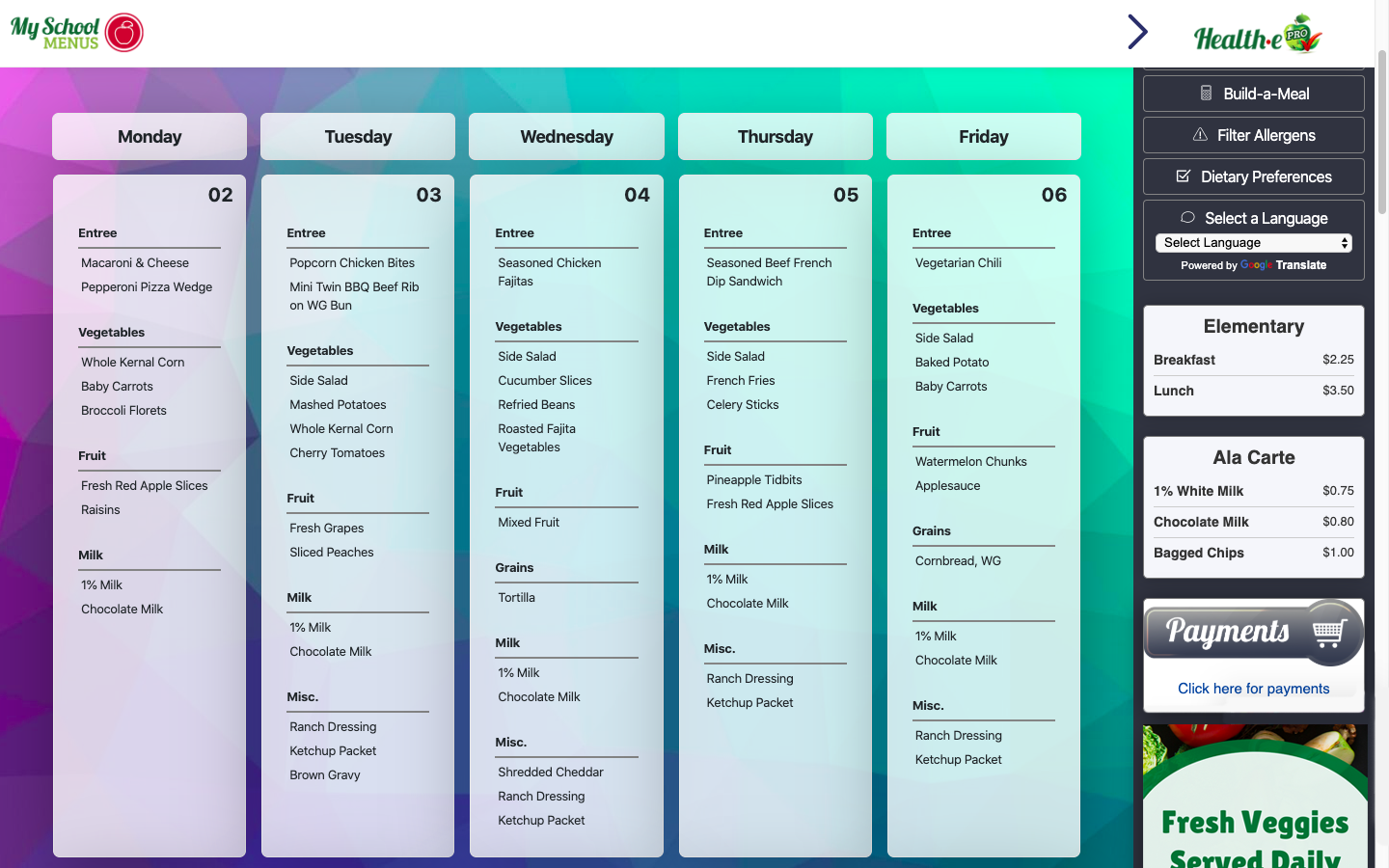Health-e Pro is a powerful tool that helps school nutrition professionals improve their menu planning and nutrient analysis in Child Nutrition. Nadine Braunstein, an Associate Professor and Dietetic Internship Director at California State University Sacramento, has found that incorporating Health-e Pro into her curriculum has helped her students develop a strong understanding of important concepts in school nutrition, like how to build compliant menus for the National School Lunch Program (NSLP). We caught up with Dr. Braunstein recently to find out what the key learnings have been for her students throughout her course. Here are the three main takeaways:
- Menu planning is not easy–there are so many complexities to staying compliant with menus.
- Nutritious meals are only nutritious when a student is willing to eat them.
- Soft skills are vital and a fantastic way to bring value in future roles.
Menu planning is not easy.
Nadine’s students discovered firsthand just how difficult menu planning can be, especially when trying to meet meal pattern regulations for an entire week. Menu planning can be like a complicated 5,000-piece puzzle without any edges. With Health-e Pro, however, the students–like school nutrition professionals–were able to create menus that were both compliant and appealing, without the need for complicated spreadsheets or manual calculations. The software helped simplify the process by providing tools for nutrient analysis, menu creation, and compliance with meal pattern regulations.
As part of their coursework, the students were given specific guidelines to follow when developing menus. These guidelines included incorporating Meatless Mondays into their menus, including culturally diverse meals that would appeal to their student population, and planning menus that only included cold meals in the event of a power outage. The students also had to be mindful of allergens and ensure that their menus were free from any potential allergens.
One particular challenge came after a group of students had each been assigned the task of building a menu for a different day of the week. When they came back together they found the entire week was not compliant. Health-e Pro made the process of fixing the menu easier by providing a color-coded system that allowed them to quickly identify non-compliant meals and adjust the menus with drag-and-drop functionality.
The students also discovered the intricacies involved in meeting the NSLP program’s grain requirements, which posed a challenge when creating menus that complied with regulations. Additionally, they gained a deeper understanding of the importance of menu flexibility to address issues such as product shortages, delivery issues, or staff absences.
Nutritious meals are only nutritious when a student is willing to eat them.
Nadine’s students quickly discovered that creating a nutritious and delicious menu was only half the battle. To encourage students to actually try the meals, they needed to focus on effective marketing strategies such as social media, newsletters, eye-catching posters, and accessible websites to encourage students to choose nutritious options.
While nutritious meals are the foundation of school nutrition programs, it’s important to remember that students are more likely to eat a meal if it looks appetizing. Nadine tasked her students with using Health-e Pro’s software to create visually appealing menus that showcased the nutritious meals they had planned. By incorporating fun icons and colorful pictures, the meals themselves became the marketing tool. With the help of powerful software like Health-e Pro’s Online Menus, school nutrition directors can easily customize graphics and create effective marketing for their program.

Soft skills are vital and a fantastic way to bring value in future roles.
In the process of creating compliant menus that met various requirements, Nadine’s students discovered the importance of collaboration and flexibility. They learned to work together to solve problems and adjust menus as needed to meet changing circumstances. These skills are essential in the fast-paced world of school nutrition, where directors must adapt to constantly shifting demands and regulations while keeping students healthy and satisfied.
Nadine noted that one of the most satisfying outcomes of teaching menu planning is watching her students grow in confidence and competence. As they learn about the impact of nutrition on different age groups, they begin to understand the importance of feeding children well. Nadine sees her students gain confidence in their ability to create nutritious, appealing meals that meet the needs of diverse student populations.
We appreciate educators like Nadine who are providing valuable opportunities for their nutrition students to learn about the critical role of Child Nutrition! The practical experience of creating menus that meet USDA standards for meal pattern requirements, and are compliant with regulations, is an invaluable tool for these students to develop the skills and competencies that will serve them well in their future careers.

